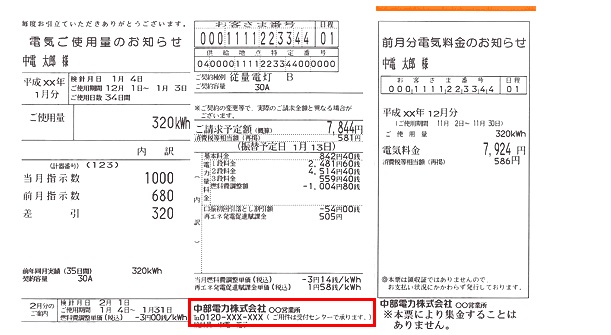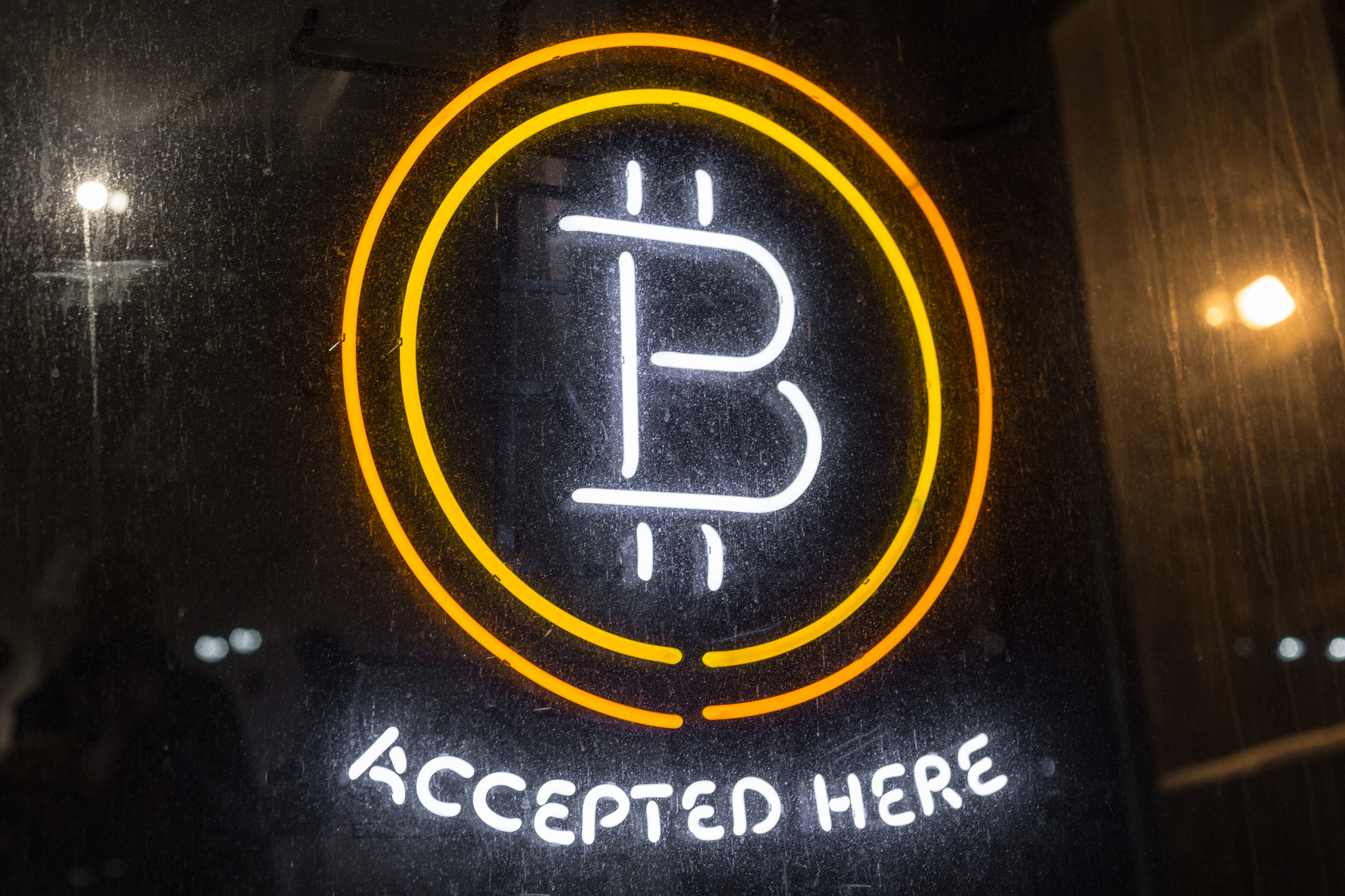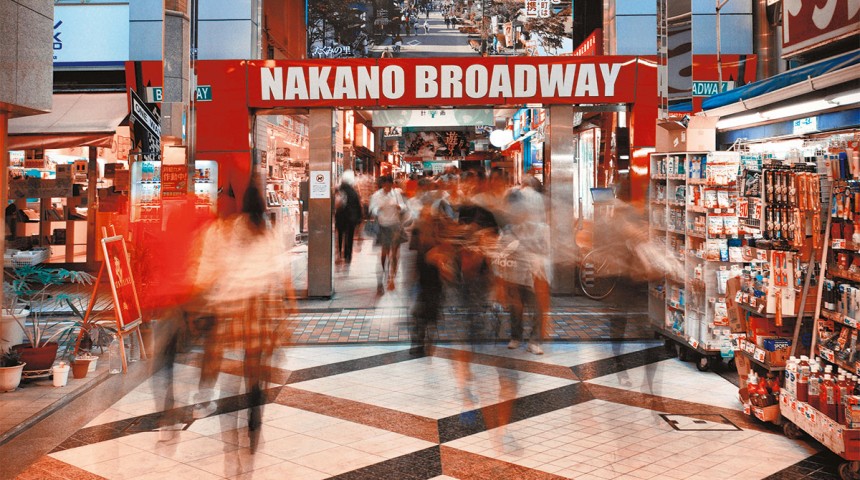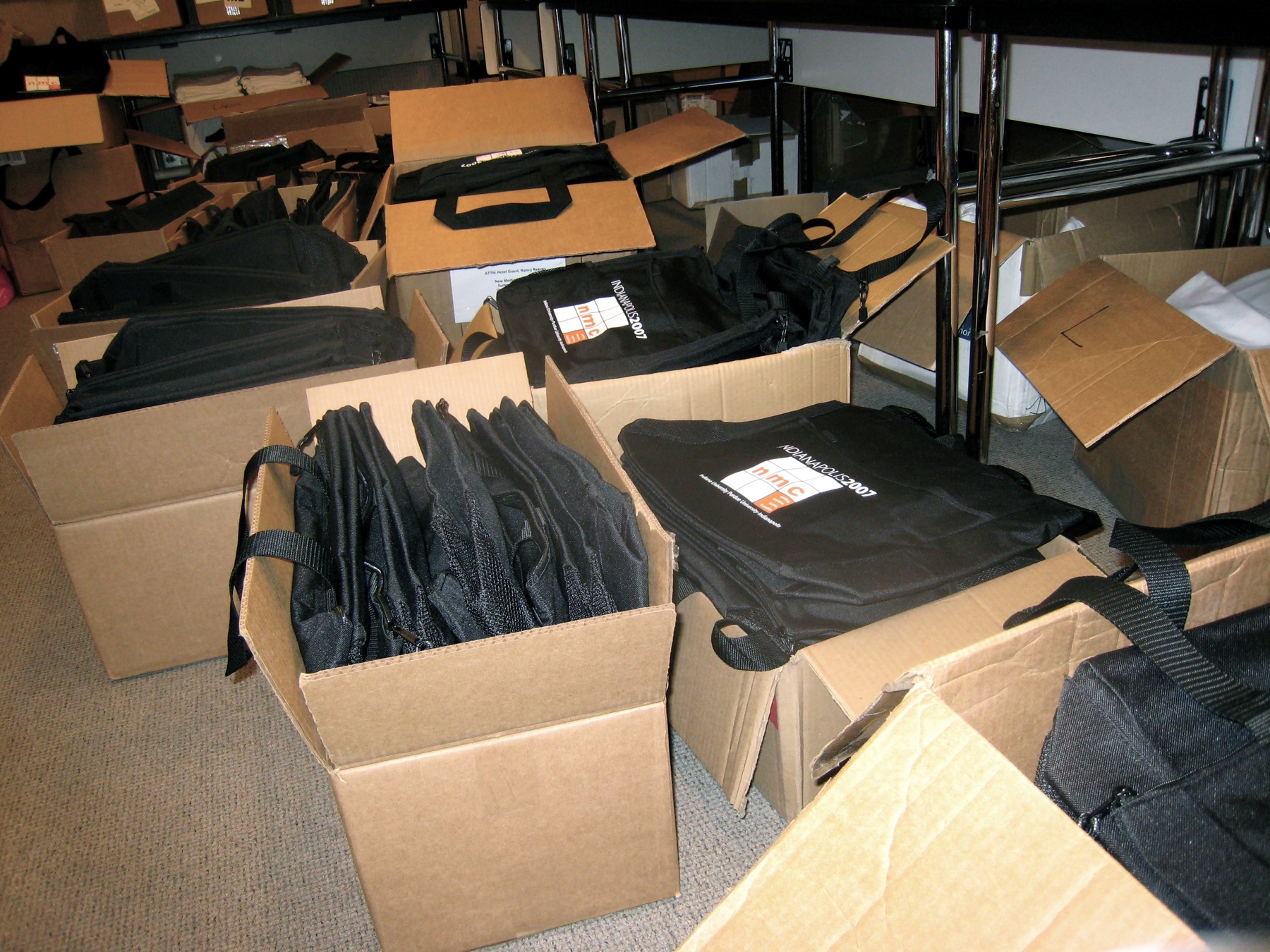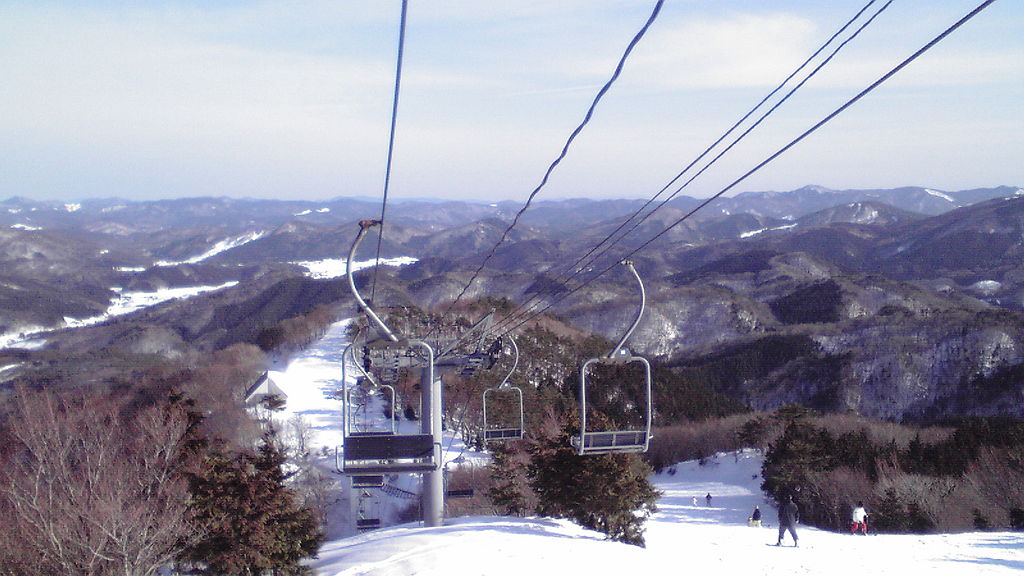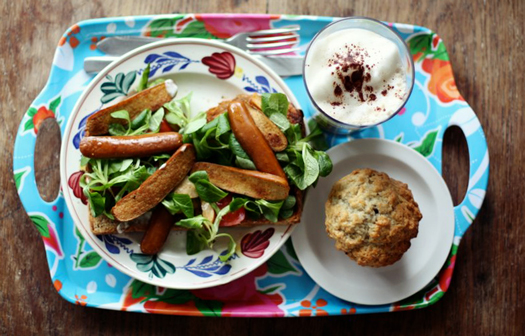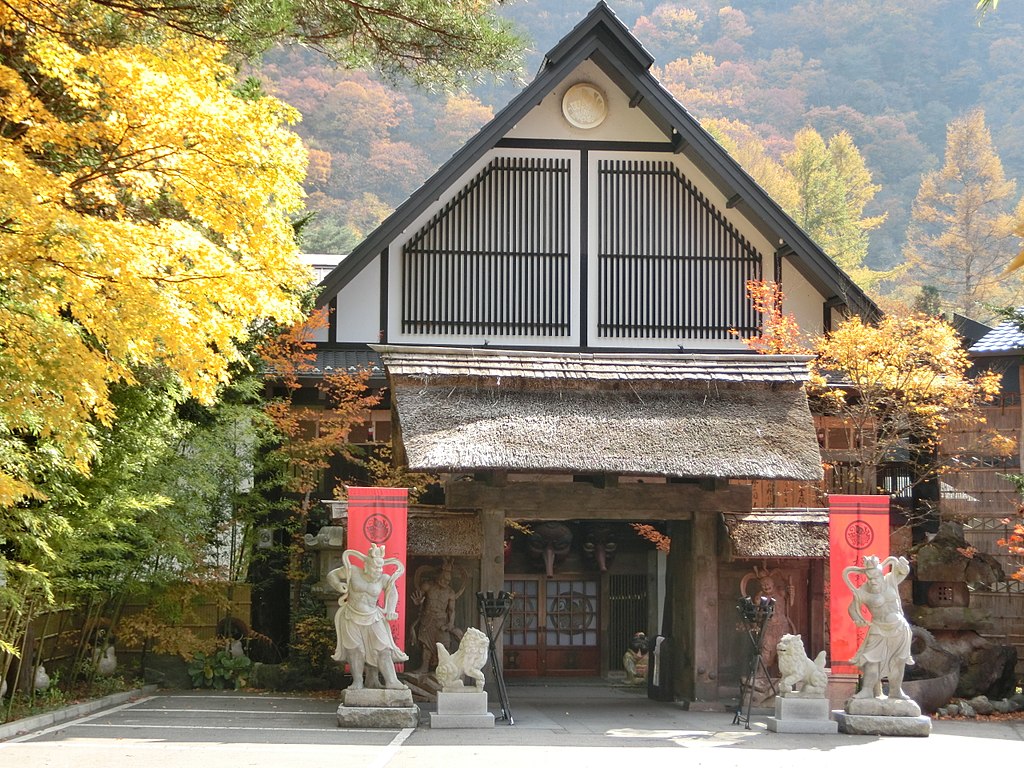Dec 27, 2017
Sample Utility Bills and Statements in Nagoya
Photo: H&R Group
Did you get something in the mail, but are not sure what it is? Perhaps we can take the mystery out of it for you! We put together some samples of commonly received bills and usage statements you are likely to receive while living in Nagoya. In general, you will receive a statement first, and about two weeks later you will receive the bill. Generally, you can tell a bill from a statement by looking for the barcode. If you see it, that is very likely a bill.
Once you receive the bill, you can take it to the nearest convenience store and make the payment. There is no action required if you receive a usage statement. Please note that setting up an auto payment for a utility or service will take a few months until automatic deductions start, and until then you will receive bills that must be paid manually.
Chubu Electric Power (中部電力)
Statement
Bill

Photo: H&R Group
Nagoya City Waterworks & Sewerage Bureau (名古屋上下水道局)
Statement
Bill
Photo: H&R Group
Toho Gas CO., Ltd. (東邦ガス)
Statement
Bill
NTT Finance (Internet) (NTTファイナンス)
Bill
Dec 27, 2017
Traffic Congestion Monitoring Sites for Japan

If you are traveling around Japan you may find these sites interesting. Using these sites you can see areas of congestion on expressways in real time, in English!
global.c-nexco.co.jp/en/jam
en-www.drivetraffic.jp/smp/realtime_map.html
Image courtesy of Jimi Okelana
Dec 26, 2017
English Speaking Yoga in Nagoya
With its combination of strength, stamina and flexibility, there are very few forms of exercise that gets your body into peak physical fitness like yoga. Having originated in India, the discipline has spread throughout the world and it continues to grow in popularity, with one 2016 study showing that 20.4 million Americans practice it, up almost 20% from 2004.
If you are one of the many millions who prefer posing as a mountain to climbing one, or for whom their favorite type of dog is the downward variety, living in Nagoya should not preclude you from continuing the pastime. There are many yoga schools in the city, a few of which hold classes in English*. So, whether you are just a fresh faced new ‘warrior’ or someone for whom the ‘wounded peacock’ holds no fear, you are likely to find a studio that caters for you.
*Be aware that at the schools listed below not all of the instructors speak English, so it is a good idea to contact them ahead of time to confirm your needs.
Energy Body
Near Hisyaya Odori subway station is the yoga and pilates studio, Energy Body. As well as Ashtanga and Hatha yoga classes, there are various courses that focus on breathing, energy flow, mother and baby yoga and even belly dancing courses. If you want to get your energy levels up before a day of work, try out one of their early morning classes. Not all instructors speak English, so check beforehand.
- Where: 7th Floor, 5th FPS BLDG, 3-19-23 Marunouchi, Naka-Ku (map)
- Website: energy-body.jp
Bikram Yoga
For those of you who like it hot, the Sakae branch of the Bikram Yoga school should be right up your alley. While the originator of this studio, California based Bikram Choudhury, is considered somewhat controversial, his style of yoga continues to be extremely popular. Though practicing yoga in a 40 degree Celsius (104F) room may sound like torture to some, many devotees of the style swear by its ability to aid in flexibility and improve postures with no warm-up needed. Some courses are conducted in English. Enquire to find out when.
My Soul 8
Another Sakae yoga school with a couple of English-speaking instructors is My Soul 8. With views overlooking Central park, this studio is as relaxed as you can get considering the hustle and bustle of the central location. Catering for all levels from beginner to advanced, you can study various yogic styles including Ashtanga, Hatha and Vinyasa.
- Where: Pacific College Building 1-23-37 Izumi Higashi Ward (map)
- Website: mysoul8.com
As well as the above yoga centers, if you are comfortable with Japanese – or perhaps consider the form of the body to transcend language, here are a couple more places you might want to try.
Yoga Studio Haano
In a light and airy studio in Nishiki, Yoga Studio Haano offers Ashtanga and Vinyasa classes for all ability levels.
- Where: 1 Chome-7-39 Nishiki, Naka Ward (map)
- Website: haano-yoga.com
Hot Yoga Loive
In Meieki you can find Hot Yoga Loive [sic], a class for – you guessed it – practitioners of hot yoga. There are classes for all levels, with five different programs.
- Where: Nakamura-ku, Meieki 4 – chome 26 – 7 Meieki UF Building 3F (map)
- Website: hotyoga-loive.com
For a list of a few other yoga spots in the city, check out this page on the always excellent kikuko-nagoya.com
By Mark Guthrie
Image by Hamza Butt (Own work) [CC BY-SA 2.0], via flickr.com Photographers site
Image by Jean Henrique Wichinoski (Own work) [CC BY-SA 2.0], via flickr.com (modified)
Dec 26, 2017
How to Bitcoin in Japan
No doubt you’ve heard of the digital currency Bitcoin in the past few months thanks in part to its meteoric rise in value over the last part of 2017. While some have likened it to a computerized form of the Tulip Craze of the 1600’s, the technology underpinning it, the “blockchain”, is what makes it the world’s first stateless, trustless and open-source form of money. Here in Japan, Bitcoin was elevated to the status of “E-Money” just like Edy and Suica earlier this year. As a result, there are many businesses starting to accept payments using Bitcoin here. But how do you get started and is it really risky?
Hey, can you spare some bits?
Let’s clear something up right away: Bitcoin was never meant to be a store of wealth nor an investment vehicle. It was created to be the digital equivalent of cash money, with all its pros and cons. Just like cash, you can simply swap Bitcoin for services and goods without needing an account at a bank, but also like cash, it can be stolen without little recourse if you’re not careful. How much or how little security you use to store your bits is up to you. With that in mind, here’s how you can grab some for yourself.
Gimme your “wallet”!
We’re not talking your “so thick, you might need to pare down those loyalty cards” leather wallet in your back pocket; a bitcoin “wallet” is actually a program on your computer or smartphone that you use to store your BTC in. My personal favorites are Blockchain and Mycelium. There are many others out there available for your smartphone or PC, but these are the most secure in my opinion. Also remember, just like you wouldn’t walk around with high amounts of cash in your actual wallet, never do the same with Bitcoin! There are ways to store high amounts offline and then withdraw from them when needed.
Get cashed up virtually.
There are 11 government licensed to exchange Japanese Yen for Bitcoin through a “furikomi” wire transfer from your bank account. I like Bitflyer’s offering best because they have been quickest to innovate and also offer services in English, but BitMax is integrated with chat app LINE and you can use LINEPay to easily convert yen into digital coins. There are also a few ctyptocurrency ATMs around if you don’t mind searching them out (and their sometimes high conversion fees.)
Spending spree!
There are lots more places where you can buy things using some of those “digital duckets” around Japan. Here in Tokyo, The Pink Cow Cafe ws when dining on any of their fantastic Cal-Mex creations back in 2013. Now that Bitcoin is hitting the mainstream and Japan is on a drive to attract more overseas tourists, many big stores are allowing transactions in the currency. Bic Camera accepts Bitcoin for transactions up to ¥300,000; Megane Super takes BTC if you need to get a new pair of eyeglasses; department store chain Marui started taking it recently and apparently a large amount of shops in Tokyo’s Akihabara electronics district are jumping at the chance to take Bitcoin. There’s so many coming online in fact, the best way to stay up-to-date is to use a service like Coinmap which keeps a constant database of venues around the world.
Where is the support?
Yes, this is (still) a brave new world when it comes to cryptocurrency. There are a lot of behind-the-scenes ironing out of standards and growing pains ahead as the new form of money gains traction. Remember, no company or country “owns” Bitcoin; it’s open-source, so there is no “call center” if you get stuck. But there are tons of people out there just like you who are very knowledgeable and will be happy to show you the ropes. Even better, Japan has always been at the epicenter of Bitcoin development and the financial authorities are very open to see it continue. As such, there are a lot of people in the know that are willing to help. I personally recommend coming to any of the meetups in Tokyo and meeting IRL with people who know what they’re doing and are willing to help anyone who wants to know how to use it; they’ve been meeting since 2011 and are a friendly bunch. Also drop a question in the Bitcoin Subreddit and you’ll definitely get a response, and likely some hilarious comments from the peanut gallery as well.
Look into my crystal ball
No one can say what will happen with Bitcoin in the future. One thing is for certain: the virtual currency technology underpinning Bitcoin is here to stay and is constantly being improved upon everyday. If you decide to get into the game, make sure you act responsibly (like any other investment vehicle) and know your own limits.
(Full disclosure: I own some cryptocurrency and have been dabbling in the scene since 2011.)
— by Jason L Gatewood
Image by Duncan Rawlinson (Own work) [CC BY-SA 2.0], via flickr.com (modified)
Dec 26, 2017
Nakano Broadway: Tokyo’s “other Akihabara”

No matter how you slice it, Tokyo’s modern image is the stuff of cyberpunk dreams. We are the city of giant robots, iron gollums, and Godzilla. So of course most people’s image of “Cool Japan” is found in Akihabara, our city’s major electronics district and hub of all things anime and video game related. Of course you gotta head over there and check out “Akiba”; its truly one-of-a-kind… Or is it?
Situated just west of Shinjuku, Nakano Station is at the center of the namesake borough of Tokyo which became home to the actual studios that output the majority of Japan’s animation and comic books to the world. Because of that, it’s become a sort of mecca to those who are so steeped in “otaku” culture that those in the know would tell you “Only tourists bother with Akiba; if you want the real deal, check out Nakano”. Specifically Nakano Broadway, which is located north of the station at the end of the Sun Mall shopping arcade.
Opened in 1966, Nakano Broadway’s first 4 floors are a hodepodge of many different shops, services and restaurants. The basement has both a Seiyu supermarket and a Daiso 100 yen shop. There’s a great ice cream place and a bunch of ramen and udon shops as well. If you’re into palm reading and fortune telling, there’s a whole hallway in the basement dedicated to just that. But what “The Broadway” is known for best is it’s huge amounts of toy, game, hobby and comic shops in the upper levels.
Up on the 3rd floor, Mandarake serves as defacto anchor for all the character related stores. Started in 1987 right here in Nakano Broadway as a simple secondhand comics shop, it has grown into a large chain of stores dealing in literally anything having to do with anime characters. While you can find a branch of Mandarake in every large city in Japan (and at least 6 other branches in Tokyo alone), this store is pretty special for being the first. If you are looking for vintage Japanese comic and animation goods, start here.
 The smaller shops on the upper floors are gold mines as well; there’s even two stores dedicated to those who collect original animation cells! Good news for Japanese toy fanatics: There are at least 4 different shops selling everything from Takara Tomy cars and Pla-Rail to vintage Voltron (oops, I mean Go-Lion) playsets. I’ve even managed to find a mint condition 1980’s era Transformers Megatron toy here… You don’t wanna know the price though, trust me.
The smaller shops on the upper floors are gold mines as well; there’s even two stores dedicated to those who collect original animation cells! Good news for Japanese toy fanatics: There are at least 4 different shops selling everything from Takara Tomy cars and Pla-Rail to vintage Voltron (oops, I mean Go-Lion) playsets. I’ve even managed to find a mint condition 1980’s era Transformers Megatron toy here… You don’t wanna know the price though, trust me.
Audio/video creation geeks aren’t left out either thanks to the Fujiya Avic store on the 2nd level. If you need DJ turntables, a Moog analog synthesizer, and a Blackmagic camera rig to shoot your next feature film, you’ll drool over it here. And if you’re in to timepieces, Jackroad will make sure your wrist walks out with something unique; they’ve been here for 30 years!
There’s something for everyone and then some at Nakano Broadway, whatever you’re into. The smaller size and cozy atmosphere makes it more inviting than its east-side rival Akiba across town according to some; but don’t take their word for it… Check it out yourself!
Access
–by Jason L Gatewood
Image Nakano Broadway Entrance courtesy Nakano Broadway Shopping Complex
Image Sun Mall courtesy Jason L Gatewood (own work)
Dec 26, 2017
Shopping via Remailing Services to Japan

No matter how cosmopolitan Japan gets, there will always be that one item that’s impossible to find from back home. Amazon fills the gap a little bit, but there are still some items that won’t get shipped to Japan. In those cases, I tend to use a remailing service to help fill the gap.
What’s a remailing service?
These are services that provide a local address in a country that you can have things shipped to in order to receive packages and mail from services that can’t ship internationally. They will collect all your packages from in-country shopping services and send them to you here in Japan in one big package to save you money. Many can be used on a case-by-case basis or you can set up a subscription service that provides other benefits such as having a permanent address for important mail to be sent to you, and in some cases even have the ability to scan and email your mail for you.
Which do you recommend?
Because these services greatly depend on the country you’re actually shipping from, it’s a bit difficult to rate everyone out there. Instead, I’ll pitch some of the ones I’ve dealt with over the years while living as an American expat in Japan; hopefully this will guide you to selecting your own.
Why no sales tax?
In the US, certain states have very low or even nonexistent sales tax. The days of online retailers not charging tax isn’t yet over, but many larger ones calculate taxes based on the state being shipped to. So if you’re making a high dollar purchase, this may be important to you. Some remailers like MyUS have special deals where they are given a tax free zip code so no sales taxes can be collected on purchases at all. Neat! Many others have the same options, so check around for that.
I need some help!
If things go wrong, you might need to chat with someone; no online shopping experience has you on pins and needles more than having both the online retailer and the shipping company say they don’t know where your package is, right? It’s even worse when one of the companies is halfway around the world and is sound asleep when Japan is awake. With Shopfans, you won’t have that problem because they have a few online staff members that keep Japanese hours, so you can engage in a real-time chat if necessary.
Is there an app for that?
Of course, many of these services have their own app available for you schedule and track your packages from end-to-end. ClevverMail’s app will let you check to see exactly what’s heading your way from your smartphone. Even if an actual app isn’t available, usually a mobile friendly website is there for you to log into.
This was just a sample of a few of the remailers I’ve dealt with personally. If you’ve been using one of these services, or have a different one you’d like to let us know about, please let us know which one and what country you’re sending from in the comments below.
— Jason L Gatewood
Image “Boxes and Boxes and Boxes …” by Alan Levine is licensed under CC BY 2.0
Dec 24, 2017
Frozen Fun in Hiroshima

For many people, wintertime in Hiroshima means oysters and nihonshu. While these are great winter indulgences, there are many other experiences worth having during the colder months. While the rest of Japan either goes into hibernation or ski season, Hiroshima has its own options for winter fun that don’t allow for hibernating. Despite minimal snowfall in the city, there are still ample opportunities to get involved in winter sports. From team activities, to solo adventures, to family trips, if you’re interested in getting outside this winter, Hiroshima and the surrounding area have all your options covered.
Big Wave Ice Rink
No winter in Hiroshima would be complete without at least a few visits to the Higashi-ku Sports Center in Ushita for some fun on the ice. While renting skates and riding around the frozen pool is exciting on its own, you could also give curling, figure skating, or ice hockey a try. There are skating lessons to sign up for that occur twice a month, and hockey teams to join for every age group.
Where: Hiroshima Big Wave – Higashi-ku Sports Center, 1-8-3 Ushita Shinmachi, Higashi-ku, Hiroshima (next to the “Ushita Big Wave” Astram stop)
Open: November to April, 9:00 a.m. – 9:00 p.m. (occasionally changed due to competitions or tournaments)
Closed: Tuesday
Prices:
General skating: 1,560 JPY (adults) 930 JPY (children)
Book of 11 passes: 15,600 JPY (adults) 9,300 JPY (children)
Skate rental (up to size 30): 300 JPY
Tel: 082-222-1860
Website (Japanese): www.sports-or.city.hiroshima.jp/locate/02
Snow Play at Mominoki Forest Park
Throughout the year, Mominoki Forest Park is a beautiful option for a retreat into nature, and winter is no exception. While many national parks close for the snowy months or convert to ski resorts, Mominoki remains open and offers some alternative options for enjoying the snow up close. The most popular use of the area is for sledding, but you can also rent (or use your own) snowshoes or cross country skis to trek around in.
Depending on driving conditions, it can take up to two hours to get to the park from Hiroshima city, but it is still very possible to experience on a day trip. The mountain views are beautiful, and the sledding hills tend to be a lot less crowded than the surrounding ski slopes. The best part of the snow park? It’s free to use, as long as you have your own gear!
Where: 1593-75 Yoshiwa, Hatsukaichi City, Hiroshima 738-0301 (Approx. 15 min. from Yoshiwa IC of Chugoku Expressway) (Google map)
Tel: 0829-77-2011
Prices:
Admission – Free
Sled Rental – 1 person sled: 600 JPY, 2 person sled: 850 JPY
Snowshoe Rental – 2,000 JPY (adults)
Cross Country Ski Rental – 3,000 JPY
Website (Japanese): www.mominoki.or.jp
Megahira Hot Spring Ski Resort
With fifteen ski resorts in the area, Hiroshimans could try out new slopes just about once a week in winter. Unfortunately, many of these resorts are located far from Hiroshima-shi, and for people wanting to make a day trip to ski there aren’t so many options to choose from.
Of course, less options doesn’t mean less quality options, as the closest resort to the city offers great skiing and snowboarding with full coverage of snow all season. Megahira Hot Spring Ski Resort has a total of 5800 meters of runs with the longest run being 2300 meters. There are various types of slopes ranging in difficulty and terrain. There is also a snow park for sledding or playing in the snow, which makes it a nice option for families with children.
In the resort area visitors can relax in the onsen, have a meal in the cafeteria or even enjoy a walk through the art museum. With its proximity to Hiroshima, Megahira can get quite crowded especially on weekends. If you need more incentive to head over on a weekday, there is also the option to try night skiing that starts up just as the daytime skiers head home.
Where: 4301 Yoshiwa, Hatsukaichi City, Hiroshima 738-0301 (Google map)
When: Open weekdays from 8:00 a.m. – 5:00 p.m. and weekends from 8:00 a.m. – 6:00 p.m.
December 2nd~March 18th
Prices:
Full day (9 hours): 5,400 JPY (adult) 4,000 JPY (child)
Half day (4 hours): 4,400 JPY (adult) 3,300 JPY (child)
6 Hour ticket: 5,000 JPY (adult) 3,800 JPY (child)
3 Hour ticket: 3,900 JPY
Night skiing: 2,500 JPY
Tel: 0829-40-3000
Website (Japanese): www.megahira.co.jp/pc/ski.html
By S.Cut (Own work) [CC BY-SA 3.0], via Wikimedia Commons
Dec 22, 2017
Organic and Vegetarian Restaurants and Shops in Nagoya

Find organic and vegetarian restaurants and shops in Nagoya
Vegetarian Shops and Restaurants
Shunrakuzen (shop)
Hours: Shop/ 10:00~20:00 Restaurant/ 11:00~15:00 LO 14:00
Address :1402 Wakabadai, Meito-ku, Nagoya
Map: https://goo.gl/maps/G6SXVrZMihk
URL: http://www.syun-rakuzen.com/index.php
Tel: 052-760-3071
Sonne Garten(shop)
Hours: 10:00~19:00
Address :2-162 Issha, Meito-ku, Nagoya
Map: https://goo.gl/maps/vC1YBeXV76k
URL: http://www.sonnegarten.com/gartentop.html
Tel: 052-703-4469
Kogomi (shop and cafe)
Hours: 11:00 – 20:00 (Lunch 11:45-14:00) closed on Wed
Address : Ogawa Building 1F, 2-3501 Hara, Tenpaku- ku, Nagoya
Map: https://goo.gl/maps/kmTqZH57Xt72
URL: http://www.kogomi.net/
Tel: 052-808-9810
Pupu kitchen (restaurant)
Hour:10:00~16:00 (Lunch 11:30-14:00) closed on Sun&Mon
Address :2-15-13 Josei, Nishi- ku, Nagoya
Map: https://goo.gl/maps/vv8LadYCjpR2
URL: http://heal-ai.com/en_organiccafe.html
Tel: 052-602-5959
Organic (Natural yeast) Bakery
Misters Backstube Kakinuma (bakery)
Hour:9:30 – 18:30 (closed on Thursday)
Address : 58 Sakuragaoka, Chikusa, Nagoya,
Map: https://goo.gl/maps/p26oFDay1MD2
URL: http://meisters-backstube.com/
Tel: 052-781-3353
Dasenka Hana (bakery)
Hour: 9:00-18:30 (closed on Monday and Tuesday)
Address : 2-6-1 Wakakusa-cho, Toyota City
Map: https://goo.gl/maps/qaqG31sXtM52
URL: http://ishigamapan.jp/shopinfo/hana/
Tel: 0565-37-3980
Monela (bakery)
Hour: 8:00-19:00 (closed on Sunday and Monday)
Address : 1-106 Chohai, Nagakute City
Map: https://goo.gl/maps/k3xpf54dq9K2
URL: http://www.monela.jp/
Tel: 0561-62-9538
By No machine-readable author provided. Linsensuppe assumed (based on copyright claims). [GFDL or CC BY-SA 4.0-3.0-2.5-2.0-1.0], via Wikimedia Commons
Dec 22, 2017
Vegan Food in Kobe

New year, new game. So how about heading into it with some healthy food by trying some great vegetarian and vegan places in Kobe? After all those delicious creamy pieces of Christmas cake, the Japanese Bo-nen-kai (year-end) parties and the overall rather hearty food that we tend to eat around the end of the year, let’s get some fresh greens into your body to provide you with the necessary energy to reach your goals this year. And lucky you, if you are in Kobe! There are plenty of nice restaurants, cafes and even supermarkets to choose from, which feature not only vegan options but also organic and regional food. The places that I will introduce are mostly located near the city center and easy to access via public transportation (near JR Motomachi station or Sannomiya station).
Modernark Pharm Café
Although it is called “café”, it feels more like a mix of a cozy café and a vegan restaurant with a warm and farmhouse-style atmosphere. The food is healthy, reasonably priced and looks absolutely gorgeous. The dishes range from soups and salads to cake and vegan curry. On top of that, the service is excellent and friendly (as most places in Japan) and they also have English speaking staff. So don’t worry, if you are not that proficient in Japanese, yet. This place is quite popular especially amongst foreigners and in my opinion this is for a good reason! If you haven’t been there yet, you should definitely go and enjoy their lovely food in this great café.
Address: 3-11-15 Kitanagasa, Chuo-ku, Kobe City, Hyogo Prefecture
Open: Monday-Sunday, 11:30 a.m. – 8:00 p.m.
Vegan Café Thallo
This café is a recommendation if you are looking for a place to have some nice and satisfying vegan lunch or to go for a tea / coffee with someone. And not only do they offer all-vegan dishes, but the combination of vegan and gluten-free, which is rather rare to find in Japan. Especially the quiche seems to be very popular and for sure worth a try. The prices are quite reasonable for a Japanese café, so you will pay around ¥1,400 for a lunch plate and ¥200 for a coffee.
Address: 4-7-12 Kitanagasadori, Chuo-ku, Kobe City, Hyogo Prefecture
Open: Monday-Sunday, 10:30 a.m. – 5:30 p.m. (Lunch only from 11:30 a.m. – 2:30 p.m.)
Kanauta
This cute little bakery, which is located just across the street from Kobe Daimaru Department store, really is a hidden gem. You will find a small, but very delicious assortment of vegan baked goods, smoothies and yoghurt. Most of their ingredients are produced on farms in Hyogo Prefecture, so you even are supporting the local economy while biting into one of these great chocolate waffles. But the best part is that the prices are low that allows you to try a few different things. And even if you are usually not eating all-vegan, it is delicious!
Address: 1-1-1 Motomachidori, Chuo-ku, Kobe City, Hyogo Prefecture
Open: Monday-Sunday, 10:30 a.m. – 08:00 p.m.
Natural House
Last but not least, if you enjoy cooking at home and like to play mix-and-match in your bento box, I suggest that you check out the “Natural House” supermarket. They stock a good range of various vegetarian and vegan, but also organic and regional products. It’s not the cheapest place to go for grocery shopping, but the quality is great and you will also find products that the usual supermarket does not sell.
Address: 2-7-7 Motomachidori, Chuo-ku, Kobe City, Hyogo Prefecture
Open: Monday-Sunday, 10:00 a.m. – 08:00 p.m.
By Suzette – www.suzette.nu from Arnhem, Netherlands [CC BY 2.0], via Wikimedia Commons
Dec 22, 2017
Etiquette for Staying in a Ryokan

A ryokan is a Japanese inn — although the word “inn” doesn’t do it justice. This traditional form of accommodation provides a distinct experience, unlike anything you will have come across in a hotel. The most important things to know when staying in a ryokan are the rules of etiquette you must abide by.
Ordering Meals
As ryokans tend to be family-run, small places, you need to order all your meals before you arrive and accept that your hosts will be unable to make any changes later. You also need to mention any special dietary requests ahead of time. Expect to receive freshly-prepared meals consisting of many courses and made with seasonal ingredients.
Check-in Times
Exact check-in times vary according to the ryokan, just like a hotel. What differs is you will probably need to check in much earlier than you are used to. Most places expect guests to arrive by 6:00 p.m. at the latest, but you may need to be there earlier if you are also having dinner.
Taking Off Your Shoes
Remove your shoes before you step inside the ryokan and enter barefoot or in slippers. If you are wearing slippers, you’ll need to take these off before you enter any room that has tatami — rush-covered straw mats.
Carrying Your Luggage
When making your way to your room with your luggage, you should carry bags rather than rolling wheeled suitcases as this will prevent damage to the floor. Staff in the ryokan can help you with any large bags.
Wearing a Yukata
Once you’ve reached your room, change out of your clothes and into a yukata — a type of kimono. Make sure you’re wearing the yukata correctly with the left collar over the right. During colder months, you’ll also receive an outer robe called a charobi.
Sleeping
You’ll notice when you enter your room that there are no beds. At night, you’ll be sleeping on a futon, which is stored during the day to save space. Staff at the ryokan will prepare your futon for you.
Enjoying the Baths
A central part of the ryokan experience is trying the Japanese baths. It is important to keep the bath water as clean as possible as others will be using the bath after you. Before you enter, wash thoroughly with soap and shampoo. Once you are clean, you can soak in the bath for as long as you’d like.
Bear in mind that in traditional ryokans bathing suits are forbidden. In addition, no guests with tattoos can bathe as tattoos are still associated with organized crime. If you are uncomfortable being nude around strangers or have tattoos, you should seek a modern ryokan with more relaxed rules.
Respecting Others
While in public areas in the ryokan, talk in a low voice to avoid disturbing others. Only use your phone in your room or, better still, keep it off during your stay.
Nothing about the etiquette of staying in a ryokan is difficult, but it is critical to know the rules before you arrive. If you bear all the above in mind, your hosts will welcome you as a respectful guest.
By English: Abasaa日本語: あばさー (Own work) [Public domain], via Wikimedia Commons
